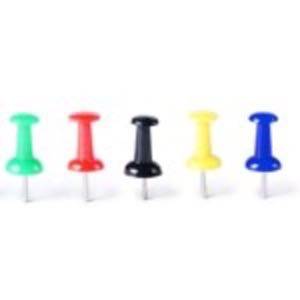Pinterest has officially become a household social networking name in the U.S.

As we’ve already reported, the majority of users are female. According to data from Google’s DoubleClick Ad Planner, of 19 million U.S. users, 82% are female and only 18% are male. With all these eager-to-shop female audience members who are most likely interested in fashion designers, style, collections and craft, it’s rather surprising that Pinterest hasn’t really figured out how to cash in. “We have one hundred ideas but no execution yet,” Jeremie Levine, a board member of Pinterest and a venture capitalist at Bessemer Venture Partners told the Wall Street Journal. If Pinterest is going to succeed, “pinning” has to become the Internet’s new favorite thing to do.
Some sites are seeing a huge uptake in traffic from Pinterest. Pinterest has also been utilizing affiliate marketing, which allows merchants to drop in links to their Web stores in exchange for a percentage of sales from such links. Take Amazon.com, for example. Every time someone clicks through to the Amazon.com site from Pinterest and actually buys something, Pinterest collects a percentage of that sale.
StumbleUpon was once a major traffic driver for many sites. Its latest redesign is focused on keeping the StumbleUpon user on the site – the company explained that many users were accidentally leaving the site during their stumbling experience, which turned out to be quite frustrating. StumbleUpon sends traffic to outside sites, however. As a result, more marketers may be turning to Pinterest for new ways to increase traffic.
British Ladies Aren’t Flocking to Pinterest… Yet
As of January 2012, Pinterest UK users numbered 320,000, 55% male and 45% female. The crowd is still mostly early adopters, as evidenced by this infographic from Visual.ly. Note that the numbers on this are culled from December 2011 data.

“I bet you in a few months, the usage will change,” says Visua.ly Editorial Director Aleksandra Todorova. “It will be just like Twitter and Facebook. Companies are going to start using it, professionals…it’s not going to just be women planning their wedding or scrapbooking or sewing quilts and all that.”
In any case, perhaps the shift toward Pinterest will move social networking friends away from what everyone else is doing or not doing on Facebook and into the land of pictures, ideas and interests.
















